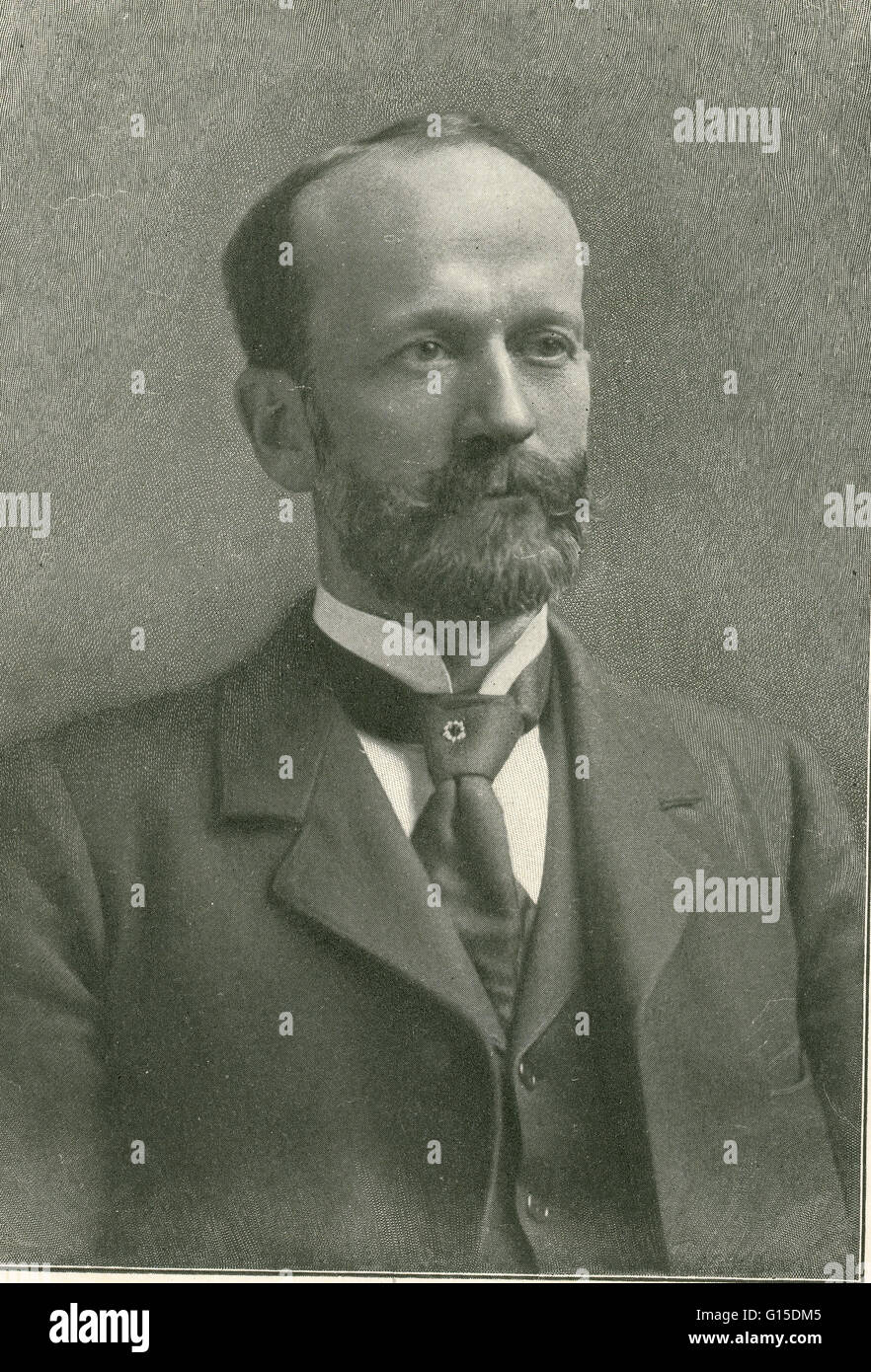Charles Doolittle Walcott (March 31, 1850 - February 9, 1927) was an American invertebrate paleontologist. He became known for his discovery in 1909 of well-preserved fossils in the Burgess Shale of British Columbia, Canada. Named after Burgess Pass near

Image details
Contributor:
Science History Images / Alamy Stock PhotoImage ID:
G15DM5File size:
33.3 MB (5.2 MB Compressed download)Releases:
Model - no | Property - noDo I need a release?Dimensions:
2812 x 4141 px | 23.8 x 35.1 cm | 9.4 x 13.8 inches | 300dpiPhotographer:
Photo ResearchersMore information:
This image could have imperfections as it’s either historical or reportage.
Charles Doolittle Walcott (March 31, 1850 - February 9, 1927) was an American invertebrate paleontologist. He became known for his discovery in 1909 of well-preserved fossils in the Burgess Shale of British Columbia, Canada. Named after Burgess Pass near the location of his discovery, the shale he collected contained carbonized organisms of such abundance and age that they subsequently provided the foundation for study of the Cambrian Period in Western North America. Between 1910 and 1924, Walcott returned repeatedly to collect more than 65, 000 specimens from what is now known as the Walcott Quarry, named after him. Walcott, fourth Secretary of the Smithsonian, often took his entire family on collecting trips. This image shows Walcott, his son Sidney Stevens Walcott, and his daughter Helen Breese Walcott working in the Burgess Shale Fossil Quarry, 1913. He died in 1927 at the age of 76.